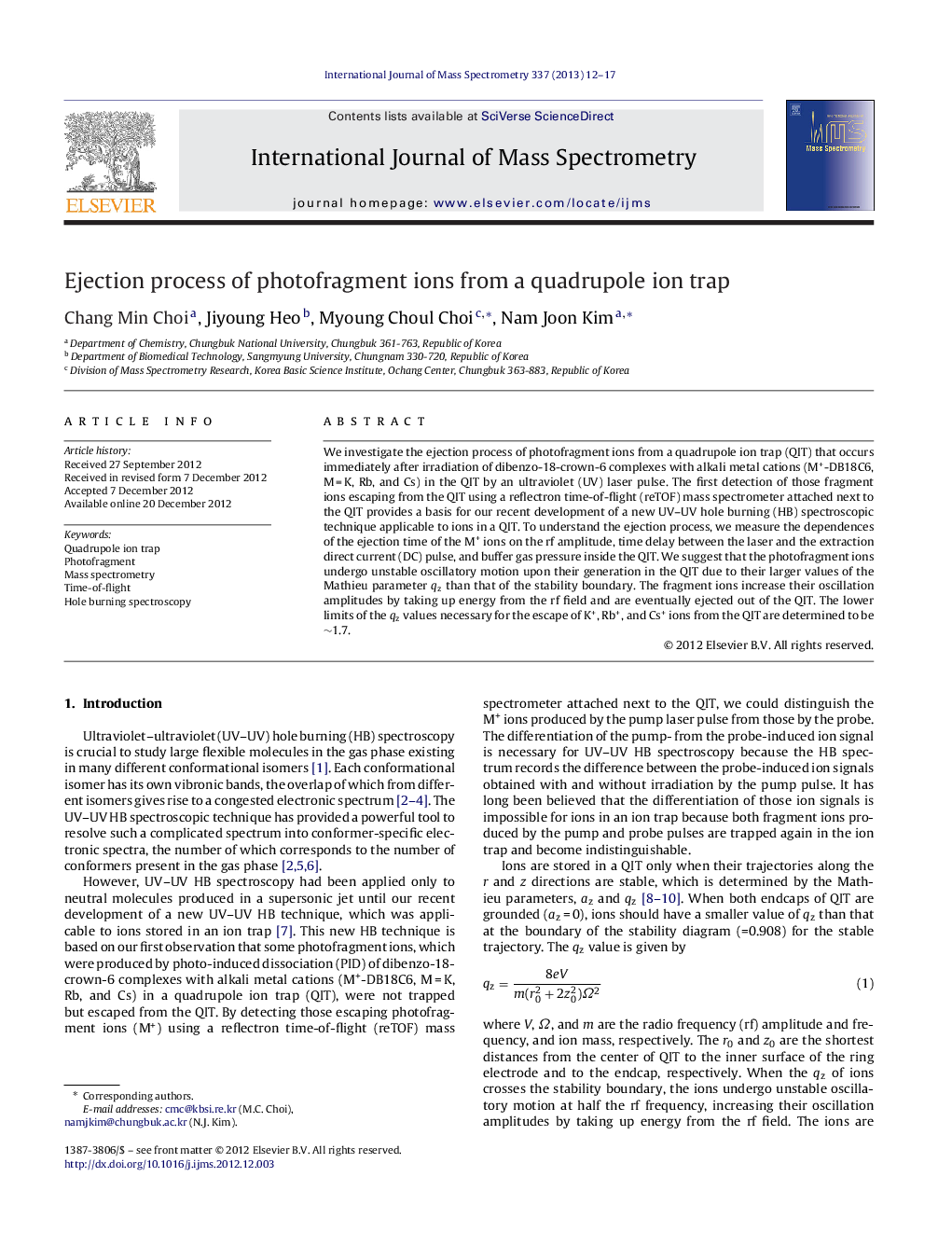| Article ID | Journal | Published Year | Pages | File Type |
|---|---|---|---|---|
| 1192620 | International Journal of Mass Spectrometry | 2013 | 6 Pages |
We investigate the ejection process of photofragment ions from a quadrupole ion trap (QIT) that occurs immediately after irradiation of dibenzo-18-crown-6 complexes with alkali metal cations (M+-DB18C6, M = K, Rb, and Cs) in the QIT by an ultraviolet (UV) laser pulse. The first detection of those fragment ions escaping from the QIT using a reflectron time-of-flight (reTOF) mass spectrometer attached next to the QIT provides a basis for our recent development of a new UV–UV hole burning (HB) spectroscopic technique applicable to ions in a QIT. To understand the ejection process, we measure the dependences of the ejection time of the M+ ions on the rf amplitude, time delay between the laser and the extraction direct current (DC) pulse, and buffer gas pressure inside the QIT. We suggest that the photofragment ions undergo unstable oscillatory motion upon their generation in the QIT due to their larger values of the Mathieu parameter qz than that of the stability boundary. The fragment ions increase their oscillation amplitudes by taking up energy from the rf field and are eventually ejected out of the QIT. The lower limits of the qz values necessary for the escape of K+, Rb+, and Cs+ ions from the QIT are determined to be ∼1.7.
Graphical abstractFigure optionsDownload full-size imageDownload high-quality image (257 K)Download as PowerPoint slideHighlights► We investigate the ejection process of photofragment ions from a quadrupole ion trap. ► The ejection process depends on the rf amplitude as well as the time delay between the laser and extraction DC pulses. ► The lower limits of the qz values necessary for the ejection of K+, Rb+, and Cs+ ions are ∼1.7.
